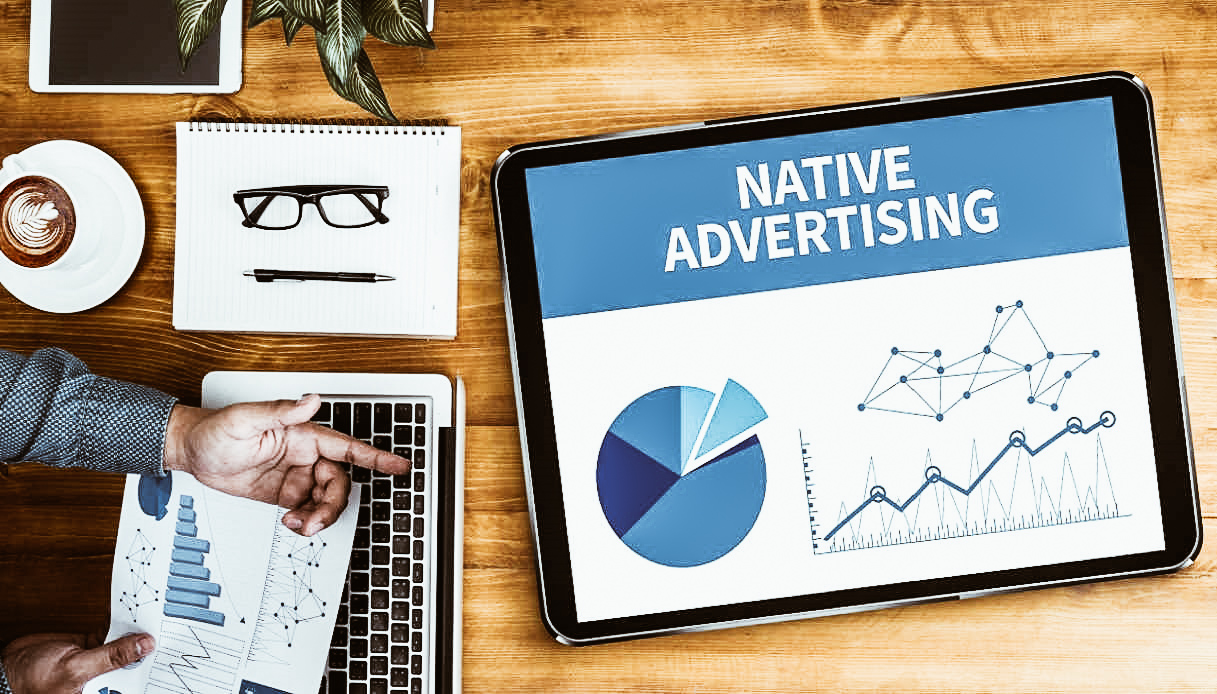We continue with our Business Focus column and today we are talking about Native Advertising. Have you ever heard of it?
Native Advertising: what it is and its importance, also in Japan
Author: Erika
At a time like this when the whole economy is almost at a standstill, the smartest move is to invest in advertising and marketing. But we know, there is a sea of information and possibilities in this field. However, recently many companies are asking “What is Native Advertising?”, let’s find out together.
Before we go on to talk about native advertising, we need to take a brief look at the world of online advertising.
The difficulties of online advertising
By now, we are all bombarded with so much information that the advertising market is often saturated. So how do you find and reach your niche audience?
The attention span of online users has been steadily declining for some time now. The average user has an attention span of around 8 seconds. Just think that a goldfish has an attention span of around 9 seconds, which shows how difficult and important it is to hit the user in the first few seconds of viewing.
If we then move on to analyse visibility and the famous CTR, we see that the majority of advertising banners are no longer even displayed, or even clicked on accidentally. In addition, users are also fed up with the exorbitant number of advertisements, very often unwanted. It is precisely here that the various AdBlocks make reaching our target audience even more difficult.
Basically, nobody looks at the banner ads on the various sites anymore. This is where content marketing comes in.

Content Marketing
By now, more or less everyone has heard of content marketing because most online advertising today is done through this form. Many companies, especially those with an international audience, have realised that content and influencers are an excellent (if not the best) marketing tool.
Indeed, branded content is now all the rage on social media and has become a much more effective form of advertising than traditional promotional campaigns.
In a nutshell, this content has a 7 times higher user trust rate than traditional display advertising. They are permanent and can capture visibility and traffic even in the long term. In addition, if we add in a properly done SEO operation, this content has a higher medium to long term ROI.
If we then consider that over 51% of the time spent by users on digital media is spent on a mobile platform, we understand how fundamental it is to have a format that works on these devices.
Mobile and advertising
In a very short time, we have gone from a horizontal 16:9 view to a vertical 16:9 view. Thanks to Stories, Reel and especially smartphones, this format is now one of the most popular formats for all digital advertising campaigns. In fact, our phone screens are already smaller than a computer screen, so why waste precious visual space with display ads, overlays and totally intrusive pop-ups?
It is precisely on these devices that advertising should be designed to optimise screen space and, consequently, the flow of navigation (continuous scrolling, of course). So how do we do it? With Native Advertising of course!

What is Native Advertising
And here we come to the highlight of our article. In essence, Native Advertising is advertising that adapts to the context in which it is placed. For example, they inherit the function of the platform they live on (e.g. Facebook likes). Furthermore, they do not interrupt the user’s navigation and are relevant to the viewer. These are characteristics that lead to a greater engagement with this type of advertising.
Basically, nothing new you might say. For years we have already been developing native campaigns such as sponsored posts on various social media, sponsored articles, widgets and so on. However, there are several recognised forms of Native Advertising:
- In-Feed: paid ads placed in an editorial site
- Paid Search: paid ads placed on the results page of a search engine.
- Recommendation widgets: paid advertisements promoting content related to an article.
- Promoted listings: paid advertisements inserted in the product listing of an e-commerce.
- In-Ad: content inserted inside a standard advertising format.
- Custom: special tailor-made initiatives conducted by a brand in collaboration with a publisher, i.e. sponsored articles.
As this is a less overt form of advertising than others, it is important to emphasise when a piece of content has been sponsored or not. Transparency must always be guaranteed.
Creating content that the public loves
We have often had to create content for a Native Advertising strategy, from brands selling Japanese lifestyle products to children’s products. However, the main aim is not to sell, but to build the audience for the client.
To do this, it is important to follow several rules because the “sponsored post” cannot be too different from the rest of the content that the chosen platform usually offers. The length, the tone of voice, the language, the font, everything must be in line with the other content. However, it is essential to create a title that is clickable and captures the visitor’s attention.
It is very important to be able to capture the user not with numbers and questions, but with a narrative that fascinates him. By now, even the least astute of internet users can tell when someone is trying to sell them a product. Because of this, it is important to differentiate our “sponsored post” by telling personal experiences and creating empathy for example.
The audience has to be involved but above all entertained. Making a person laugh is one of the hardest things to do, but when you succeed, you have captured their attention forever. And so the customer is retained.
Be empathetic but objective, try to help the audience in some way and share your experience. The product does not necessarily have to be mentioned repeatedly, once is enough, also because with the opposite you could risk falling into what in jargon is called “branding” and thus achieve the opposite effect desired by Native Advertising.


Native Advertising in Japan
And here we come to Japan. Despite being a country extremely focused on traditional media and advertising on them, things are changing recently. Due in part to the recent pandemic, the advertising market has seen a significant surge in digital. In fact, Japanese advertisers spent nearly $15 billion on digital in 2021. With the rise of digital media in Japan, companies can no longer ignore the importance of integrating a digital strategy into their overall marketing.
However, fundamentally the Japanese people remain a very traditional people, very tied to history and past experiences. The Japanese people are extremely trust-based, so digital advertising still depends on having a good online reputation. Therefore, SEO and social media operations become key to getting better results in the Japanese market.
One of the keys to a successful campaign in Japan is the use of correct localisation. We can’t say it enough, but the Japanese are extremely meticulous when it comes to choosing the right product before making a purchase. Using their language and visuals becomes really important. Writing content that is correct and in line with your target audience is one of the foundations for building a good campaign. Attention to detail and high product quality is the key to winning over Japanese customers.
In conclusion
Native advertisements should resemble any other article on the chosen platform, both in style and function. Be resourceful, truthful and above all remember to entertain your audience.
Share this:
- Click to share on Facebook (Opens in new window)
- Click to share on Twitter (Opens in new window)
- Click to share on Tumblr (Opens in new window)
- Click to share on Pinterest (Opens in new window)
- Click to share on Telegram (Opens in new window)
- Click to share on WhatsApp (Opens in new window)
- Click to share on Reddit (Opens in new window)
- Click to print (Opens in new window)






